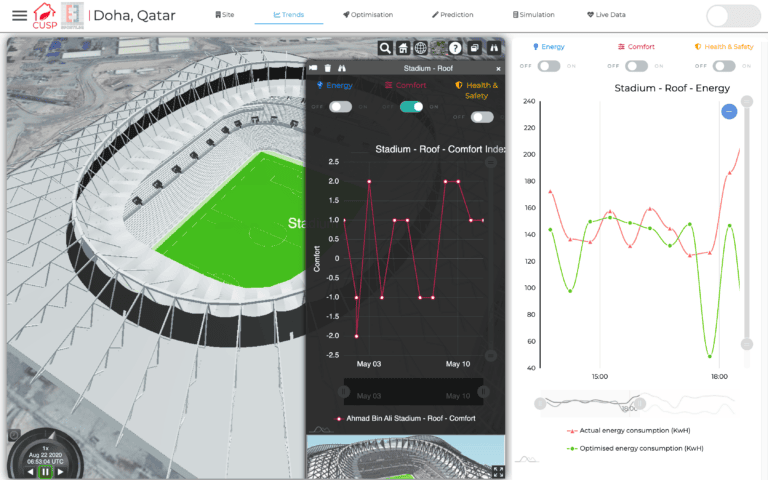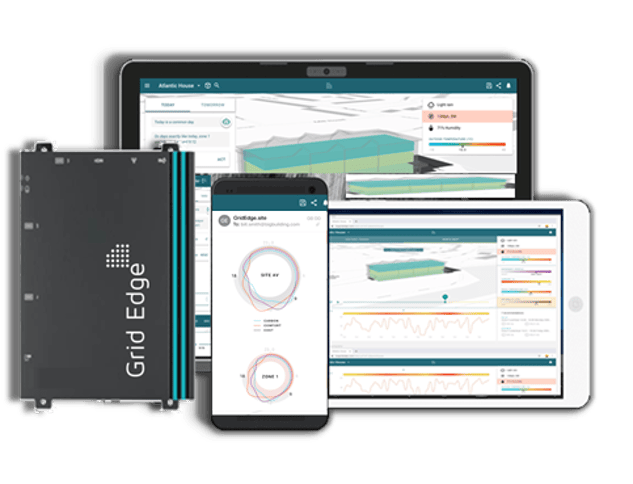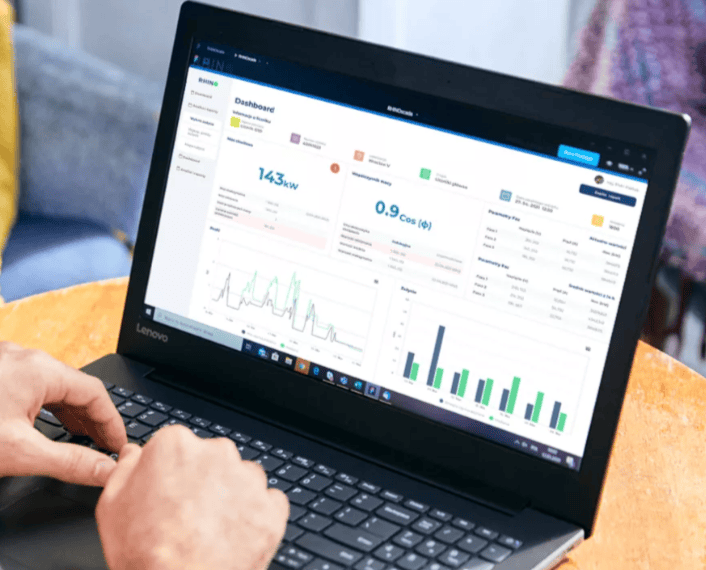BMS agnostic building optimisation

Problem Addressed
Commercial buildings currently represent 23% of built environment carbon emissions in the UK. After construction, commercial real estate lapses into inefficiency within 6 months of commissioning, and there is often inadequate measuring, reporting, and benchmarking. With a changing regulatory landscape, it is important asset owners are able to quickly and efficiently measure and improve on the performance of their assets.
Case Study
re:sustain was deployed on a 17,600m2 office in Croydon in September 2022. The building’s existing control operations were accessed via re:sustain’s gateway, the BMS data collected on the re:sustain platform, and combined with other data sets (e.g. weather, utility bills, structural plans) in the re:sustain Engine, and a Digital Twin of the building was created, enabling a detailed Energy & Carbon Assessment. Their forecast estimated annual energy savings of £140,000 or 210 tonnes of CO2 emissions (26% total energy). The re:sustain Optimisation Service then recalibrated the existing settings of the building remotely, continuously streaming BMS data through re:sustain’s engine algorithms, so control optimisations could be efficiently adjusted for air handling units and the hot water system based on occupancy and season. Over 12 months (October 2022 – October 2023), the optimisations resulted in a 28% reduction in energy usage, which was a saving of 240 tonnes of CO2 emissions and £171,000. The Optimisation Service will continue to monitor and adjust the building’s controls, while the Asset Manager uses the Digital Twin and re:sustain’s Capex Modelling tools to further decarbonise the building in 2024.
More information can be found at the link below:
Facts and Figures
This page presents data, evidence, and solutions that are provided by our partners and members and should therefore not be attributed to UKGBC. While we showcase these solutions for inspiration, to build consensus, and create momentum for climate action, UKGBC does not offer commercial endorsement of individual solutions. If you would like to quote something from this page, or more information, please contact our Communications team at media@ukgbc.org.
Related members
Related
Building Optimisation Software Using AI and Digital Twins

Autonomous AI HVAC optimisation

Commercial building energy optimisation

Structured data on building performance

